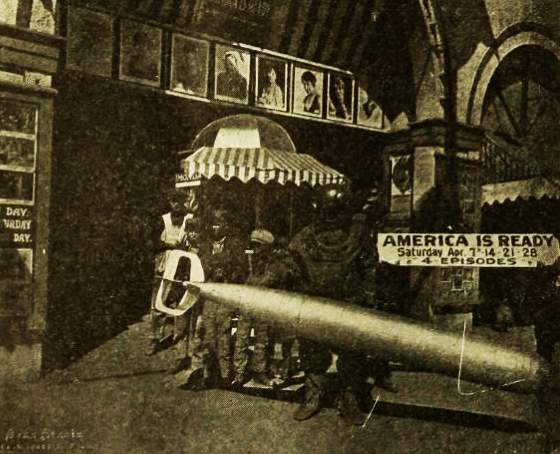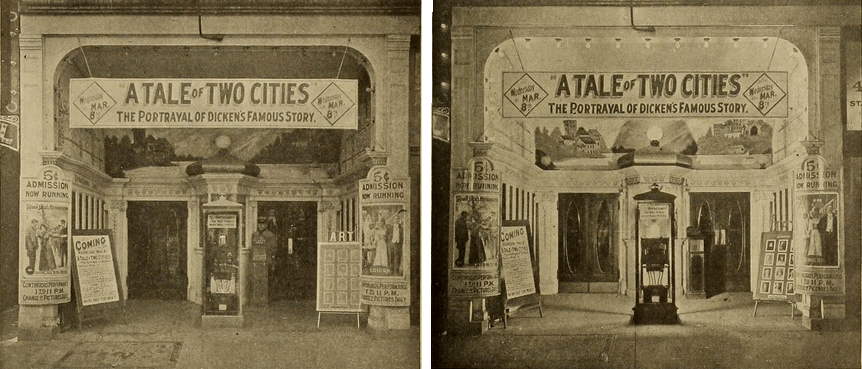Before fan magazines became the norm and newspapers began to run information about movies, filmgoers relied heavily on their local theater(s) to advertise new and special films as they came through the town. To help spread word, theater owners and exhibitors would adopt interesting and, often, larger-than-life displays that would invite potential filmgoers.
Some films were accompanied by a kind of publicity gag, often involving some element of the film being put on display outside the theater. The film “The Flying Torpedo” had a plot that revolved around battle at sea. So, a theater owner in Grand Junction, Colorado acquired a torpedo and a diving suit to bring attention to the theater and the film. In the trade paper clipping below, you can see the diver and the torpedo proudly on display.
The owner of a theater in Baltimore, Maryland used a similar tactic when he acquired a copy of “My Four Years in Germany.” The stunt was comprised of a parade float-esque jail cell that housed an unhappy impersonator of the Kaiser.
For some theaters, it was more about creating an attractive front than creating stunts. The Art Theatre in New York installed mercury lights to give their facade an ambient glow when the sun went down.
And another theater gave filmgoers a larger-than-life encounter with a cutout display of Theda Bara that dominated the lobby.
The silent film picture palaces were often works of art on their own. You can view many of Chicago’s own theaters here.
New to our silent film series? Catch up with the rest of our installments!
Want to dive deeper into the world of silent film? Keep up with my posts over on Curtains or on Chicago Nitrate.



